08 December 2023
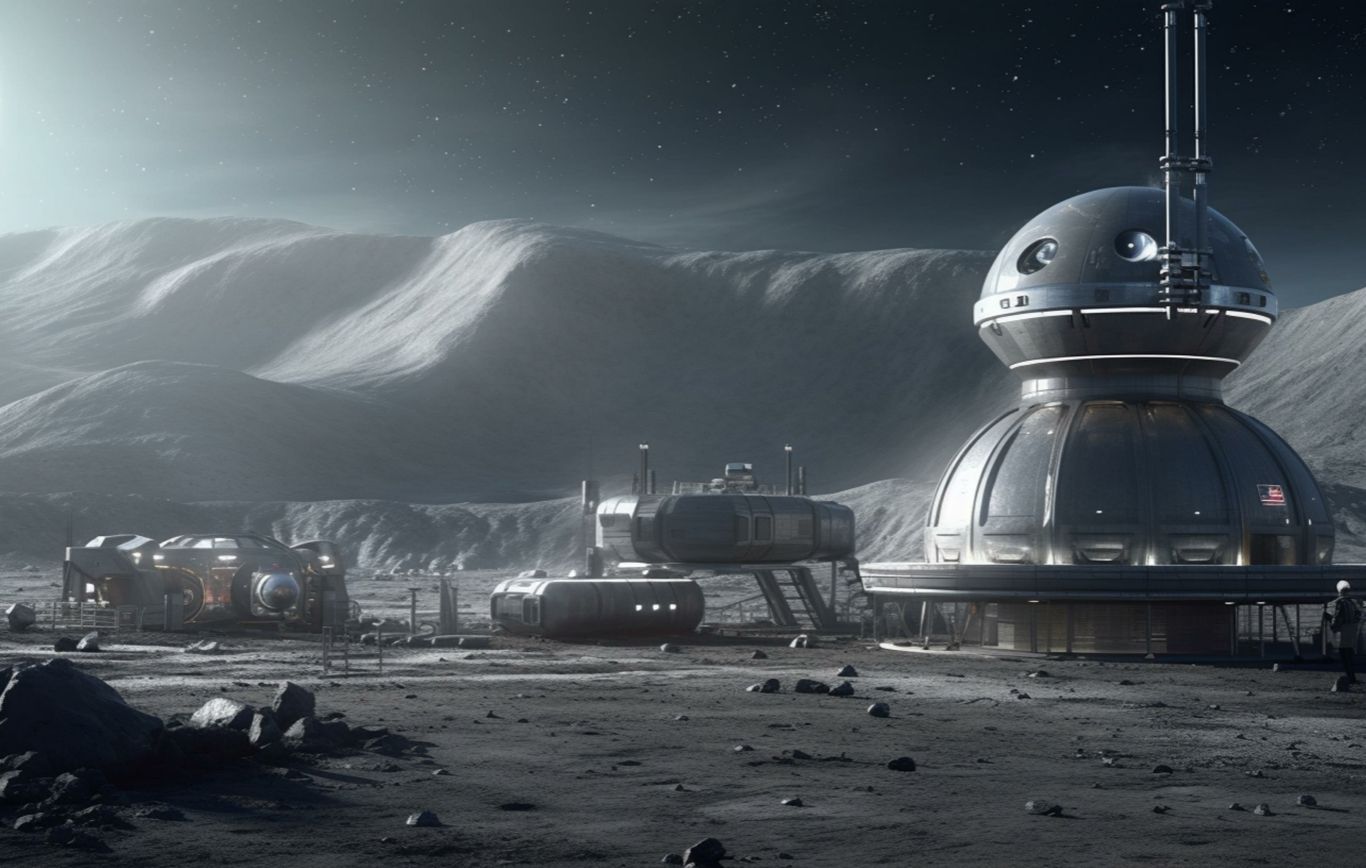
US to lead construction of commercial lunar economy? (Image - Adobe)
In a breakthrough development, DARPA (the US Defense Advanced Research Projects Agency) has announced its programme to develop a scalable infrastructure on the Moon, with the vision of supporting a commercial lunar economy within 10 years. As part of the the 10-Year Lunar Architecture, or LunA-10, DARPA have already selected 14 companies to take part in a study, who will work together over the next 7months to design technology solutions.
“The next decade may give rise to a thriving lunar economy,” the agency said in a statement. Talking about the selected companies involved, Michael Nayak, DARPA program manager for LunA-10, said they offer ““a clear vision…towards our goal: a self-sustaining, monetizable, commercially owned-and-operated lunar infrastructure.”
The selected companies include Blue Origin, SpaceX, Firefly Aerospace and ICON, with services ranging from providing robotics, in-orbit services and resource extraction. Sierra Space, for example, will focus on "integrating oxygen extraction, electrical storage and hydrogen-oxygen engine technology into an architecture for a commercial lunar infrastructure concept” (Sierra Space).
LunA-10 opens up a number of opportunities for the US. With increased competition from China, this may now be a way that they look to take the lead, in rapidly developing a commercial infrastructure and becoming the primary partner in future activities such as lunar mining.
Furthermore, it represents an opportunity for the US and its partners to springboard its competition in a lunar space race.
Also, an article from Defense One argues that increased commercial activity on the surface would mean that “the harder it will be for China’s activities there to remain unobserved.”
One thing is certain, and that is the clarity of US intentions on the Moon, the commanding role of the private sector and the overall growth of a cislunar and new lunar economy.
Rolls-Royce and ISRO building towards future infrastructure
DARPA weren’t alone in this cause this week. Rolls-Royce have revealed a model of a planned mini nuclear reactor, which may one day power lunar and space exploration. The company unveiled the model at the UK Space Conference Belfast, and plan to develop the full Space Micro-Reactor by 2030.
The reactor could be used for both defence and commercial sector applications, and also provide a solutions to help reduce reliance on carbon fuels. Nonetheless, it hopes to solve the problem of sourcing a clean, uninterrupted power source, with Dr Paul Bate, chief executive of the UK Space Agency, saying that “this innovative research by Rolls-Royce could lay the groundwork for powering continuous human presence on the Moon…”
The ISRO (India Space Agency) has also been demonstrating their technology which will support future exploration of the Moon. Their spacecraft, which delivered the Chandrayaan-3 mission to Moon, has now returned to Earth orbit. The demonstration hopes to validate India’s means of carrying-out a future sample return mission, although no date has yet been given for such a project.
Both the UK and India have recently announced bold lunar exploration plans. UK, along with the other 21 European Space Agency (ESA) nations, has agreed to plans to develop a European commercial cargo spacecraft, which may also lead the way for developing technology to land its own astronauts on the lunar surface.
India have recently become the fourth nation to land on the Moon, and have announced plans for a crewed landing by 2040.
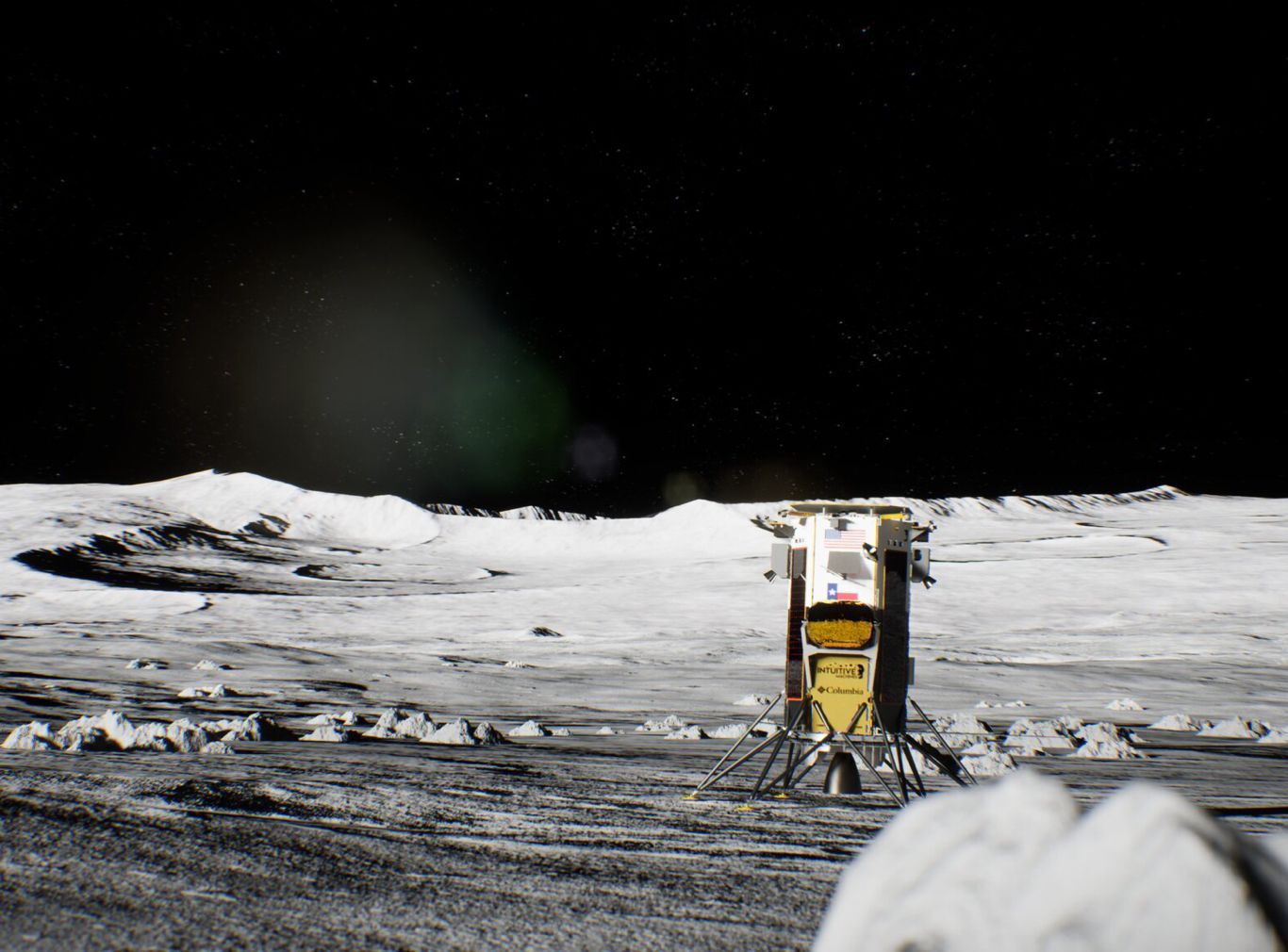
Intuitive Machine's Nova-C Lander (Image - Intuitive Machines)
Three landings missions in the same week?
Even in the very near future, we are set to see a flurry of activity, with three landing attempts set to take place perhaps within the same week.
Intuitive Machines (US) have announced the successful delivery of their Nova-C lander to Cape Canaveral, Florida. This is part of their IM-1 mission, set to launch on a SpaceX Falcon-9 on January 12. They will take a short journey, with a landing expected on either January 19 or 21, hoping to become the first commercial company to successfully land on the Moon.
Their competitor, Astrobotic (US), has a launch window opening on December 24, but will take a longer journey, with a landing window potentially opening on January 25.
The Japanese Space Agency (JAXA) are already on the way to the Moon, with their SLIM lander launching back on September 6. The agency announced that they aim for the descent sequence to take place on January 19 (same as Intuitive Machines). Moreover, they will be hoping to become the fifth nation to successful land on the lunar surface.
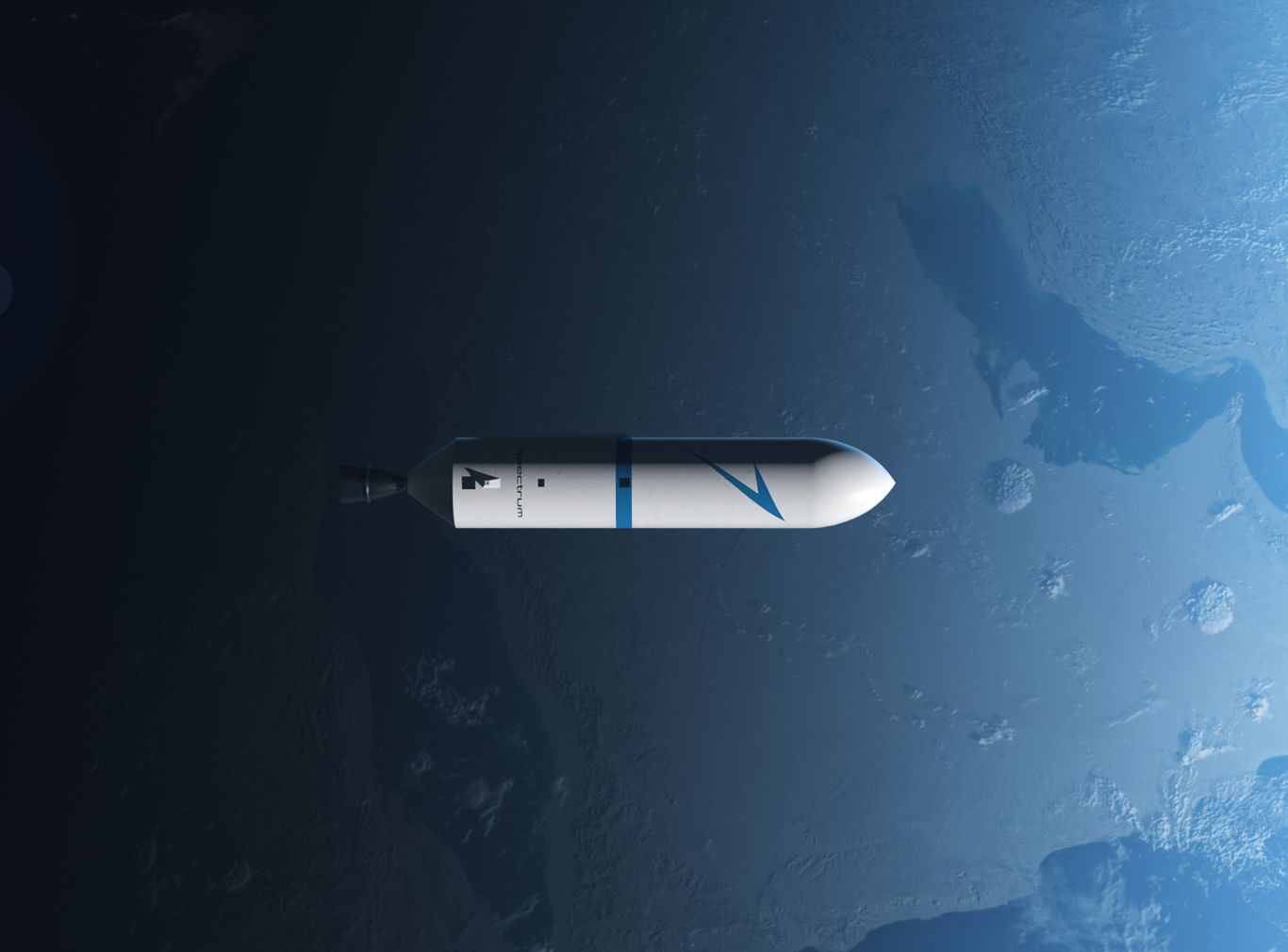
Isar Aerospace's Spectrum Vehicle (Image - Isar Aerospace)
SpaceX plan NASA demo on next Starship launch, while startups ready for busy 2024 launch calendar
Leading industry news outlet, Space News, this week announced the winners of their annual “Icon Awards”. Among them was launch startup, Isar Aerospace (Germany), named “startup of the Year”. They were noted as being at the forefront of Europe’s quest to establish independant space launch services, and for taking home a notable $165 million in a Series C round back in March.
They hope to carry out the first launch of their Spectrum rocket sometime next year, from the newly constructed spaceport in Andøya, Norway. Yet they are just one company amongst many who are hoping for maiden launches in 2024. In Europe, we expect to see launches from Rocket Factor Augsburg (Germany), Skyrora (UK), Orbex (UK) and Hylmpulse (Germany).
Successful demonstrations from these startups represents a Europe that is changing its ways in space-launch, where commercial services are purchased rather than contracted or developed in-house.
Yet while Europe prepares for its entry into commercial spaceflight, SpaceX is already readying for the next launch of Starship, and this time potentially carrying a vital NASA demonstration. The “propellant transfer demonstration” asks SpaceX to develop a “Cryogenic Fluid Management”, capable of refuelling Starship in-orbit, needed for journeys to destinations such as Mars.
Such technology is what will be vital in order to not only service the growing number of vehicles in-orbit, but also in order to facilitate travel to the Moon and beyond, expanding access to the cislunar economy.

NASA may apply for lunar samples (Image - Adobe)
Sample sharing opens door for warming US-China relations
One critical component which will dictate the success of this growing economy is cooperation, and how access to space resources will be governed and regulated in future. It is commonly known that technological innovation is outpacing law-making in space, and a growing rivalry between the US and China increases the threat of destabilisation.
The rival factions of the Artemis Accords (US-led) and the ILRS (China-led) offer frameworks to guide and regulate space activities, with the latter gaining Egypt as its latest member this week.
However, it it unlikely at this stage that either side would be willing to sign-up to the others framework, especially considering preventive barriers such as the US Wolf Amendment, which prevents NASA from using government funds to engage in direct, bilateral cooperation with the Chinese government.
However, recent developments offer a glimmer of hope. On November 29, NASA researchers were granted permission to apply to the China National Space Administration (CNSA) in order to access lunar samples collected by their Chang’e-5 mission.
Despite the growing rivalry between these tow space superpowers, this offers a rare opportunity for cooperation and engagement. It might be a small step, but could this perhaps be a curtain-raiser for an era of better space relations? One thing we do know is that without some form of cooperation, a new and maybe aggressive space and lunar race may continue to unfold.
Our future in space

US to lead construction of commercial lunar economy? (Image - Adobe)
08 December 2023
DARPA's Lunar Plan, NASA Seeks Chinese Moon Samples, and Anticipating Three Moon Landings - Space News Roundup
In a breakthrough development, DARPA (the US Defense Advanced Research Projects Agency) has announced its programme to develop a scalable infrastructure on the Moon, with the vision of supporting a commercial lunar economy within 10 years. As part of the the 10-Year Lunar Architecture, or LunA-10, DARPA have already selected 14 companies to take part in a study, who will work together over the next 7 months to design technology solutions.
“The next decade may give rise to a thriving lunar economy,” the agency said in a statement. Talking about the selected companies involved, Michael Nayak, DARPA program manager for LunA-10, said they offer ““a clear vision…towards our goal: a self-sustaining, monetizable, commercially owned-and-operated lunar infrastructure.”
The selected companies include Blue Origin, SpaceX, Firefly Aerospace and ICON, with services ranging from providing robotics, in-orbit services and resource extraction. Sierra Space, for example, will focus on "integrating oxygen extraction, electrical storage and hydrogen-oxygen engine technology into an architecture for a commercial lunar infrastructure concept” (Sierra Space).
LunA-10 opens up a number of opportunities for the US. With increased competition from China, this may now be a way that they look to take the lead, in rapidly developing a commercial infrastructure and becoming the primary partner in future activities such as lunar mining.
Furthermore, it represents an opportunity for the US and its partners to springboard its competition in a lunar space race.
Also, an article from Defense One argues that increased commercial activity on the surface would mean that “the harder it will be for China’s activities there to remain unobserved.”
One thing is certain, and that is the clarity of US intentions on the Moon, the commanding role of the private sector and the overall growth of a cislunar and new lunar economy.
Rolls-Royce and ISRO building towards future infrastructure
DARPA weren’t alone in this cause this week. Rolls-Royce have revealed a model of a planned mini nuclear reactor, which may one day power lunar and space exploration. The company unveiled the model at the UK Space Conference Belfast, and plan to develop the full Space Micro-Reactor by 2030.
The reactor could be used for both defence and commercial sector applications, and also provide a solutions to help reduce reliance on carbon fuels. Nonetheless, it hopes to solve the problem of sourcing a clean, uninterrupted power source, with Dr Paul Bate, chief executive of the UK Space Agency, saying that “this innovative research by Rolls-Royce could lay the groundwork for powering continuous human presence on the Moon…”
The ISRO (India Space Agency) has also been demonstrating their technology which will support future exploration of the Moon. Their spacecraft, which delivered the Chandrayaan-3 mission to Moon, has now returned to Earth orbit. The demonstration hopes to validate India’s means of carrying-out a future sample return mission, although no date has yet been given for such a project.
Both the UK and India have recently announced bold lunar exploration plans. UK, along with the other 21 European Space Agency (ESA) nations, has agreed to plans to develop a European commercial cargo spacecraft, which may also lead the way for developing technology to land its own astronauts on the lunar surface.
India have recently become the fourth nation to land on the Moon, and have announced plans for a crewed landing by 2040.
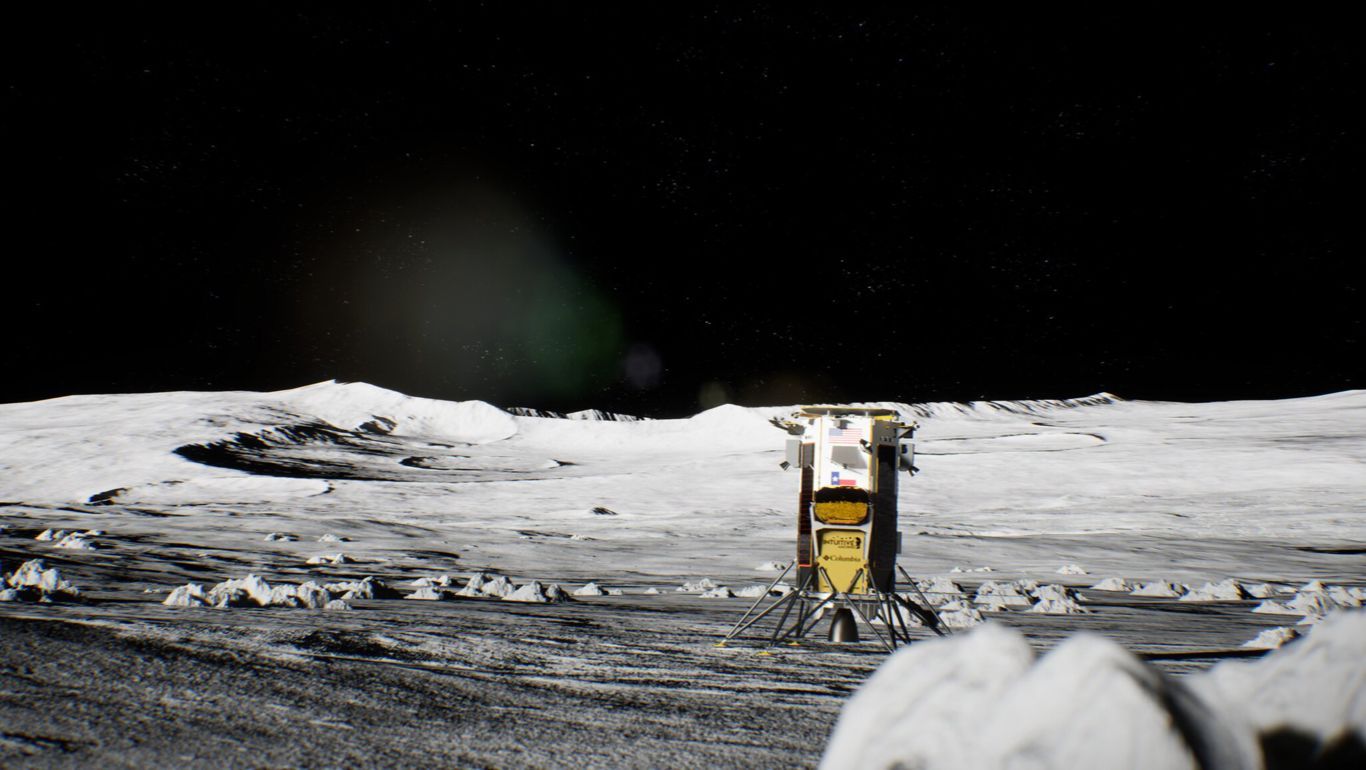
Intuitive Machine's Nova-C Lander (Image - Intuitive Machines)
Three landings missions in the same week?
Even in the very near future, we are set to see a flurry of activity, with three landing attempts set to take place perhaps within the same week.
Intuitive Machines (US) have announced the successful delivery of their Nova-C lander to Cape Canaveral, Florida. This is part of their IM-1 mission, set to launch on a SpaceX Falcon-9 on January 12. They will take a short journey, with a landing expected on either January 19 or 21, hoping to become the first commercial company to successfully land on the Moon.
Their competitor, Astrobotic (US), has a launch window opening on December 24, but will take a longer journey, with a landing window potentially opening on January 25.
The Japanese Space Agency (JAXA) are already on the way to the Moon, with their SLIM lander launching back on September 6. The agency announced that they aim for the descent sequence to take place on January 19 (same as Intuitive Machines). Moreover, they will be hoping to become the fifth nation to successful land on the lunar surface.
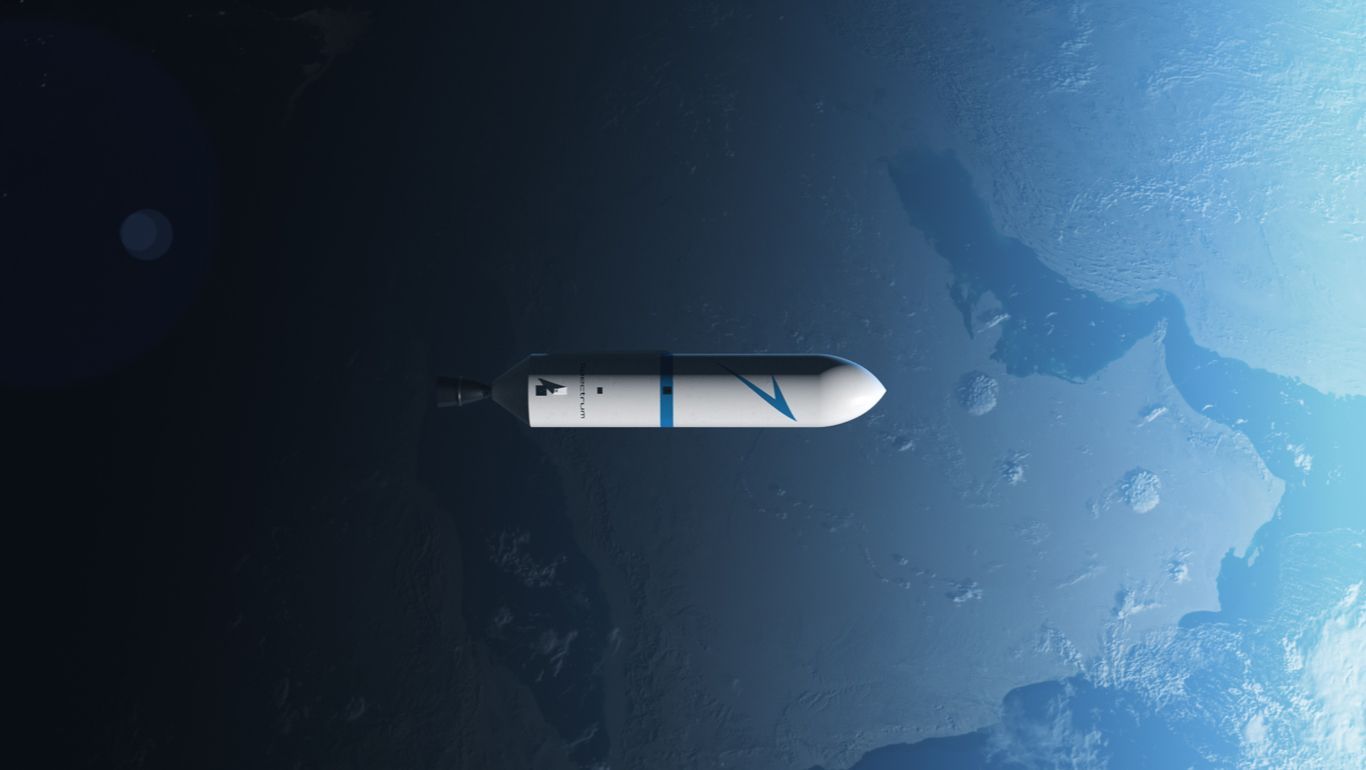
Isar Aerospace's Spectrum Vehicle (Image - Isar Aerospace)
SpaceX plan NASA demo on next Starship launch, while startups ready for busy 2024 launch calendar
Leading industry news outlet, Space News, this week announced the winners of their annual “Icon Awards”. Among them was launch startup, Isar Aerospace (Germany), named “startup of the Year”. They were noted as being at the forefront of Europe’s quest to establish independant space launch services, and for taking home a notable $165 million in a Series C round back in March.
They hope to carry out the first launch of their Spectrum rocket sometime next year, from the newly constructed spaceport in Andøya, Norway. Yet they are just one company amongst many who are hoping for maiden launches in 2024. In Europe, we expect to see launches from Rocket Factor Augsburg (Germany), Skyrora (UK), Orbex (UK) and Hylmpulse (Germany).
Successful demonstrations from these startups represents a Europe that is changing its ways in space-launch, where commercial services are purchased rather than contracted or developed in-house.
Yet while Europe prepares for its entry into commercial spaceflight, SpaceX is already readying for the next launch of Starship, and this time potentially carrying a vital NASA demonstration. The “propellant transfer demonstration” asks SpaceX to develop a “Cryogenic Fluid Management”, capable of refuelling Starship in-orbit, needed for journeys to destinations such as Mars.
Such technology is what will be vital in order to not only service the growing number of vehicles in-orbit, but also in order to facilitate travel to the Moon and beyond, expanding access to the cislunar economy.

NASA may apply for lunar samples (Image - Adobe)
Sample sharing opens door for warming US-China relations
One critical component which will dictate the success of this growing economy is cooperation, and how access to space resources will be governed and regulated in future. It is commonly known that technological innovation is outpacing law-making in space, and a growing rivalry between the US and China increases the threat of destabilisation.
The rival factions of the Artemis Accords (US-led) and the ILRS (China-led) offer frameworks to guide and regulate space activities, with the latter gaining Egypt as its latest member this week.
However, it it unlikely at this stage that either side would be willing to sign-up to the others framework, especially considering preventive barriers such as the US Wolf Amendment, which prevents NASA from using government funds to engage in direct, bilateral cooperation with the Chinese government.
However, recent developments offer a glimmer of hope. On November 29, NASA researchers were granted permission to apply to the China National Space Administration (CNSA) in order to access lunar samples collected by their Chang’e-5 mission.
Despite the growing rivalry between these tow space superpowers, this offers a rare opportunity for cooperation and engagement. It might be a small step, but could this perhaps be a curtain-raiser for an era of better space relations? One thing we do know is that without some form of cooperation, a new and maybe aggressive space and lunar race may continue to unfold.
Share this article
08 December 2023
DARPA's Lunar Plan, NASA Seeks Chinese Moon Samples, and Anticipating Three Moon Landings - Space News Roundup
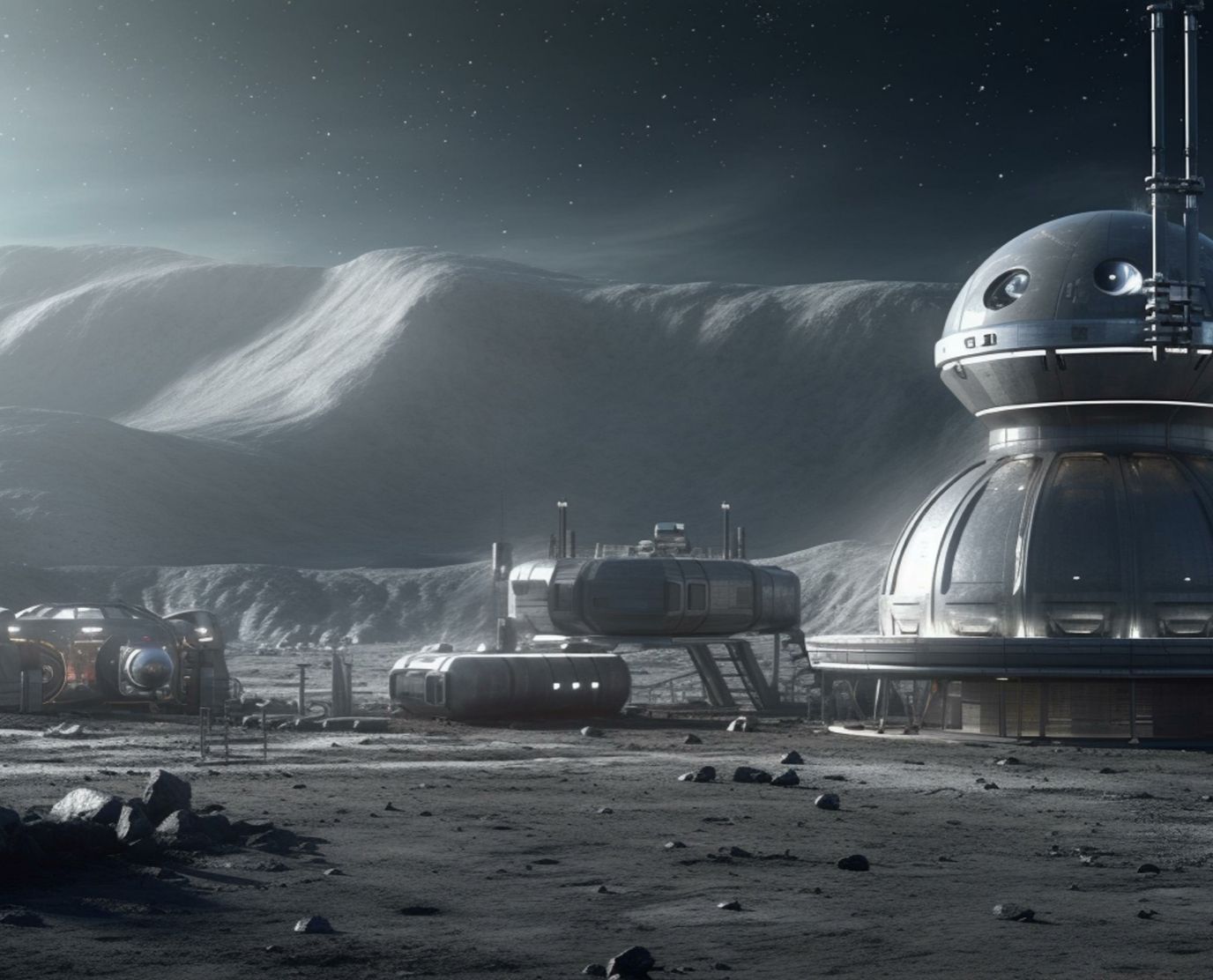
US to lead construction of commercial lunar economy? (Image - Adobe)
In a breakthrough development, DARPA (the US Defense Advanced Research Projects Agency) has announced its programme to develop a scalable infrastructure on the Moon, with the vision of supporting a commercial lunar economy within 10 years. As part of the the 10-Year Lunar Architecture, or LunA-10, DARPA have already selected 14 companies to take part in a study, who will work together over the next 7months to design technology solutions.
“The next decade may give rise to a thriving lunar economy,” the agency said in a statement. Talking about the selected companies involved, Michael Nayak, DARPA program manager for LunA-10, said they offer ““a clear vision…towards our goal: a self-sustaining, monetizable, commercially owned-and-operated lunar infrastructure.”
The selected companies include Blue Origin, SpaceX, Firefly Aerospace and ICON, with services ranging from providing robotics, in-orbit services and resource extraction. Sierra Space, for example, will focus on "integrating oxygen extraction, electrical storage and hydrogen-oxygen engine technology into an architecture for a commercial lunar infrastructure concept” (Sierra Space).
LunA-10 opens up a number of opportunities for the US. With increased competition from China, this may now be a way that they look to take the lead, in rapidly developing a commercial infrastructure and becoming the primary partner in future activities such as lunar mining.
Furthermore, it represents an opportunity for the US and its partners to springboard its competition in a lunar space race.
Also, an article from Defense One argues that increased commercial activity on the surface would mean that “the harder it will be for China’s activities there to remain unobserved.”
One thing is certain, and that is the clarity of US intentions on the Moon, the commanding role of the private sector and the overall growth of a cislunar and new lunar economy.
Rolls-Royce and ISRO building towards future infrastructure
DARPA weren’t alone in this cause this week. Rolls-Royce have revealed a model of a planned mini nuclear reactor, which may one day power lunar and space exploration. The company unveiled the model at the UK Space Conference Belfast, and plan to develop the full Space Micro-Reactor by 2030.
The reactor could be used for both defence and commercial sector applications, and also provide a solutions to help reduce reliance on carbon fuels. Nonetheless, it hopes to solve the problem of sourcing a clean, uninterrupted power source, with Dr Paul Bate, chief executive of the UK Space Agency, saying that “this innovative research by Rolls-Royce could lay the groundwork for powering continuous human presence on the Moon…”
The ISRO (India Space Agency) has also been demonstrating their technology which will support future exploration of the Moon. Their spacecraft, which delivered the Chandrayaan-3 mission to Moon, has now returned to Earth orbit. The demonstration hopes to validate India’s means of carrying-out a future sample return mission, although no date has yet been given for such a project.
Both the UK and India have recently announced bold lunar exploration plans. UK, along with the other 21 European Space Agency (ESA) nations, has agreed to plans to develop a European commercial cargo spacecraft, which may also lead the way for developing technology to land its own astronauts on the lunar surface.
India have recently become the fourth nation to land on the Moon, and have announced plans for a crewed landing by 2040.
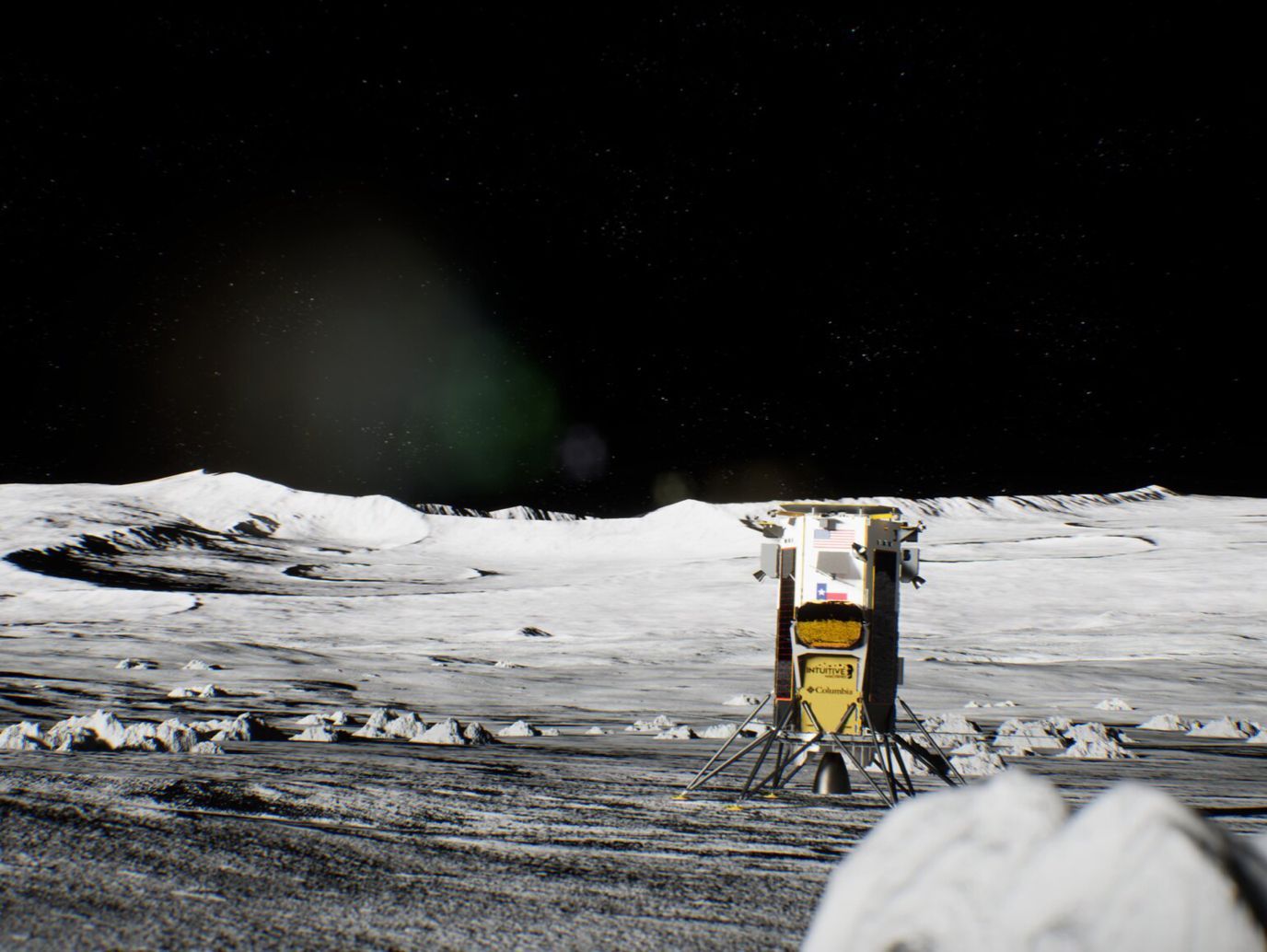
Intuitive Machine's Nova-C Lander (Image - Intuitive Machines)
Three landings missions in the same week?
Even in the very near future, we are set to see a flurry of activity, with three landing attempts set to take place perhaps within the same week.
Intuitive Machines (US) have announced the successful delivery of their Nova-C lander to Cape Canaveral, Florida. This is part of their IM-1 mission, set to launch on a SpaceX Falcon-9 on January 12. They will take a short journey, with a landing expected on either January 19 or 21, hoping to become the first commercial company to successfully land on the Moon.
Their competitor, Astrobotic (US), has a launch window opening on December 24, but will take a longer journey, with a landing window potentially opening on January 25.
The Japanese Space Agency (JAXA) are already on the way to the Moon, with their SLIM lander launching back on September 6. The agency announced that they aim for the descent sequence to take place on January 19 (same as Intuitive Machines). Moreover, they will be hoping to become the fifth nation to successful land on the lunar surface.
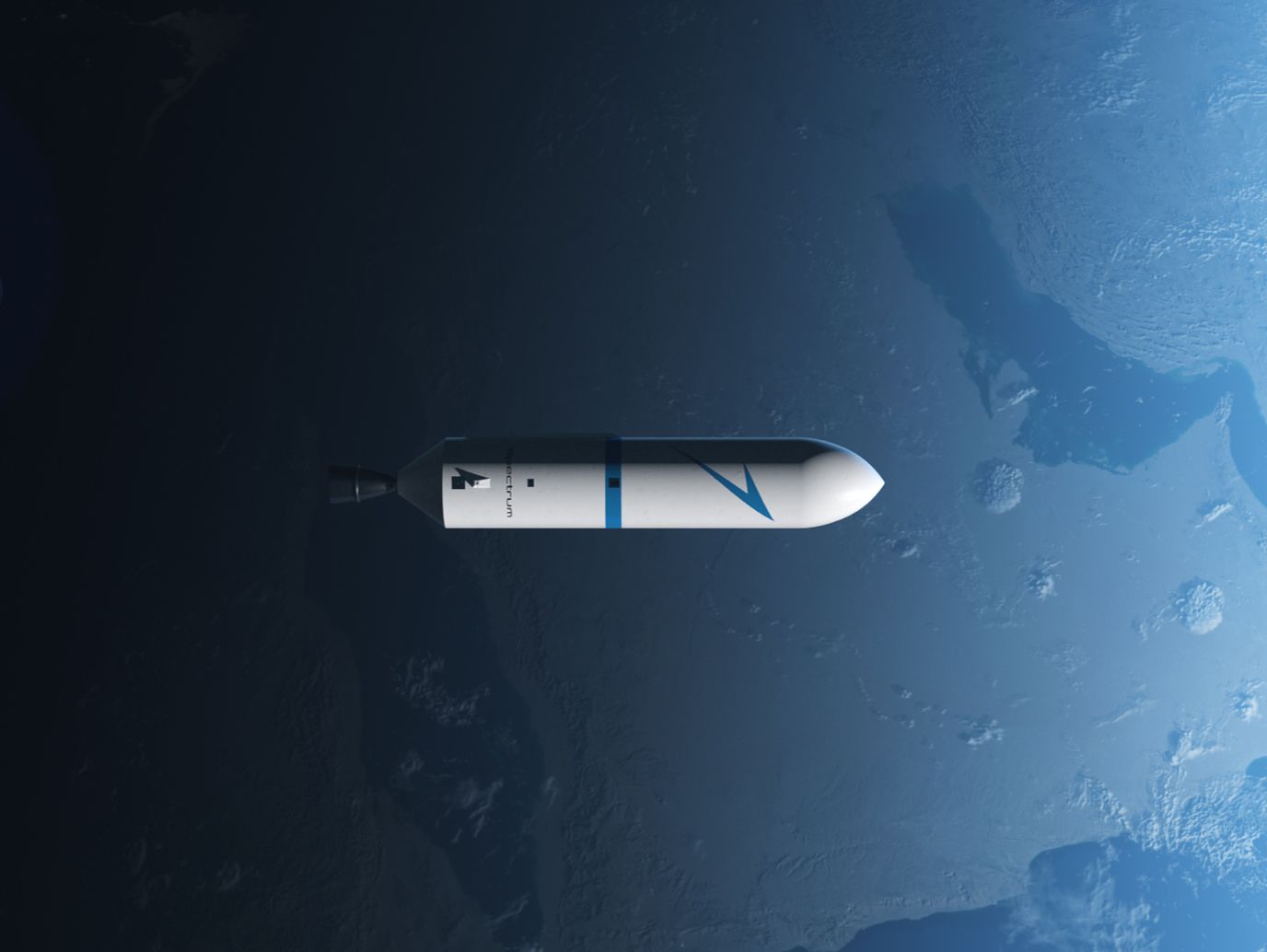
Isar Aerospace's Spectrum Vehicle (Image - Isar Aerospace)
SpaceX plan NASA demo on next Starship launch, while startups ready for busy 2024 launch calendar
Leading industry news outlet, Space News, this week announced the winners of their annual “Icon Awards”. Among them was launch startup, Isar Aerospace (Germany), named “startup of the Year”. They were noted as being at the forefront of Europe’s quest to establish independant space launch services, and for taking home a notable $165 million in a Series C round back in March.
They hope to carry out the first launch of their Spectrum rocket sometime next year, from the newly constructed spaceport in Andøya, Norway. Yet they are just one company amongst many who are hoping for maiden launches in 2024. In Europe, we expect to see launches from Rocket Factor Augsburg (Germany), Skyrora (UK), Orbex (UK) and Hylmpulse (Germany).
Successful demonstrations from these startups represents a Europe that is changing its ways in space-launch, where commercial services are purchased rather than contracted or developed in-house.
Yet while Europe prepares for its entry into commercial spaceflight, SpaceX is already readying for the next launch of Starship, and this time potentially carrying a vital NASA demonstration. The “propellant transfer demonstration” asks SpaceX to develop a “Cryogenic Fluid Management”, capable of refuelling Starship in-orbit, needed for journeys to destinations such as Mars.
Such technology is what will be vital in order to not only service the growing number of vehicles in-orbit, but also in order to facilitate travel to the Moon and beyond, expanding access to the cislunar economy.
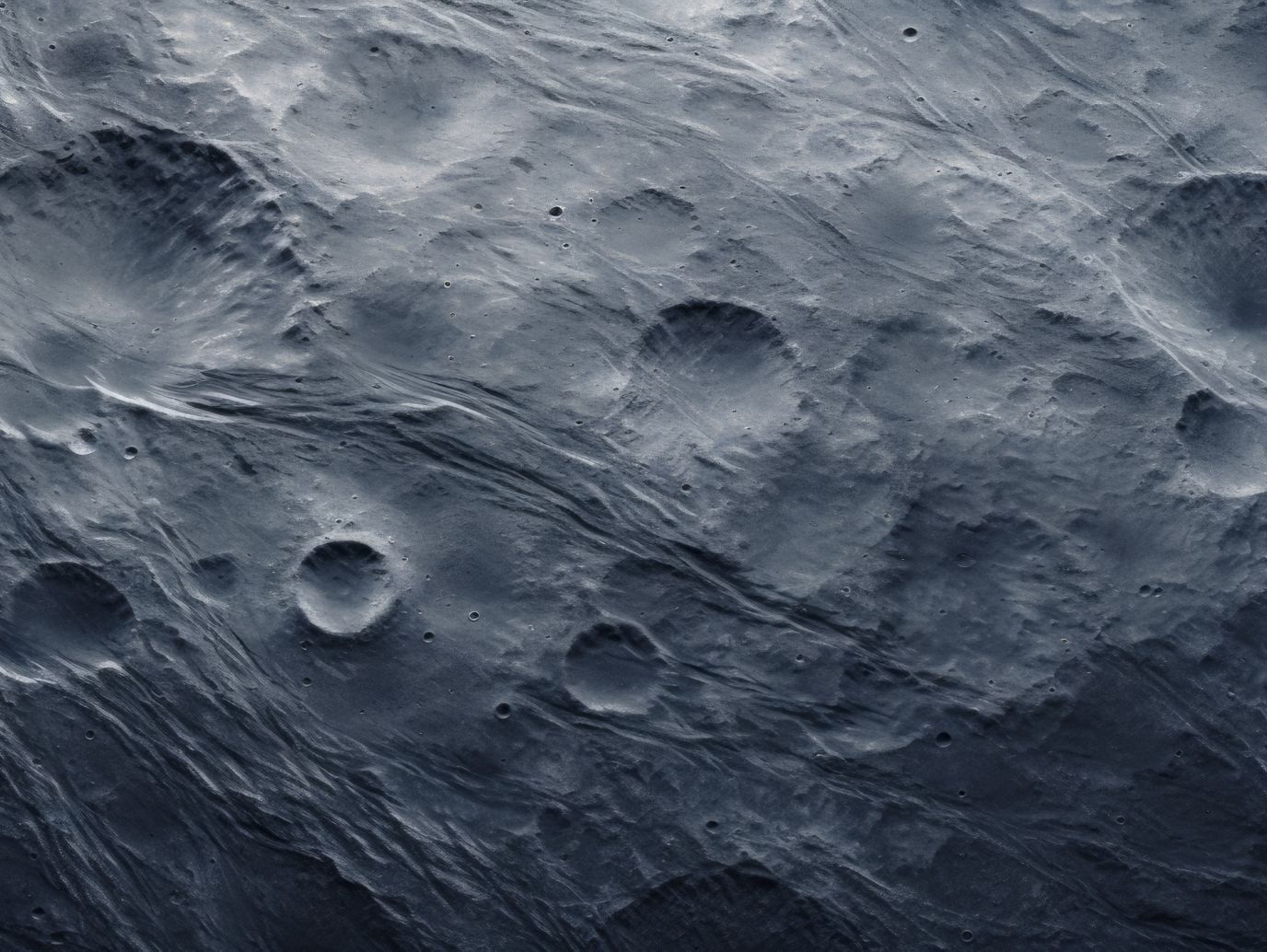
NASA may apply for lunar samples (Image - Adobe)
Sample sharing opens door for warming US-China relations
One critical component which will dictate the success of this growing economy is cooperation, and how access to space resources will be governed and regulated in future. It is commonly known that technological innovation is outpacing law-making in space, and a growing rivalry between the US and China increases the threat of destabilisation.
The rival factions of the Artemis Accords (US-led) and the ILRS (China-led) offer frameworks to guide and regulate space activities, with the latter gaining Egypt as its latest member this week.
However, it it unlikely at this stage that either side would be willing to sign-up to the others framework, especially considering preventive barriers such as the US Wolf Amendment, which prevents NASA from using government funds to engage in direct, bilateral cooperation with the Chinese government.
However, recent developments offer a glimmer of hope. On November 29, NASA researchers were granted permission to apply to the China National Space Administration (CNSA) in order to access lunar samples collected by their Chang’e-5 mission.
Despite the growing rivalry between these tow space superpowers, this offers a rare opportunity for cooperation and engagement. It might be a small step, but could this perhaps be a curtain-raiser for an era of better space relations? One thing we do know is that without some form of cooperation, a new and maybe aggressive space and lunar race may continue to unfold.
Share this article
External Links
This Week
*News articles posted here are not property of ANASDA GmbH and belong to their respected owners. Postings here are external links only.












